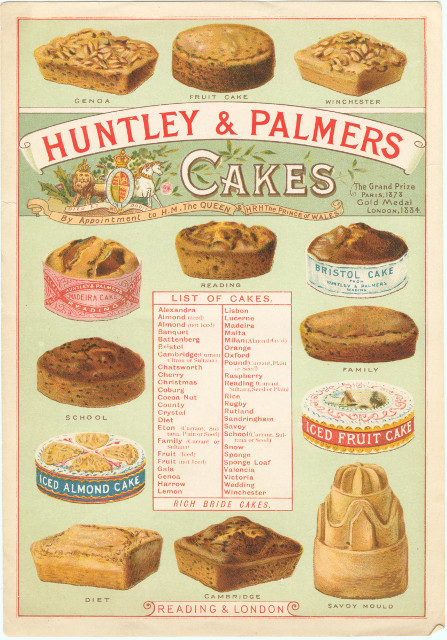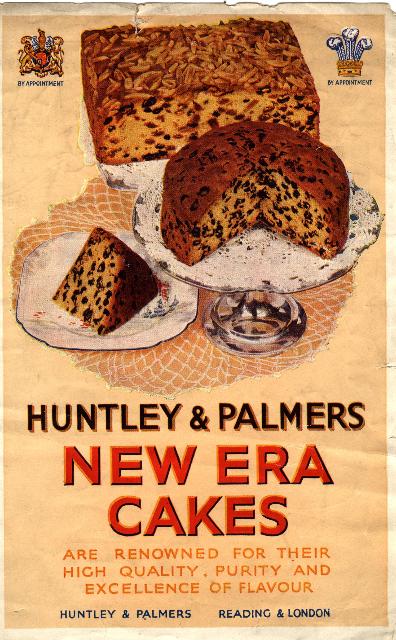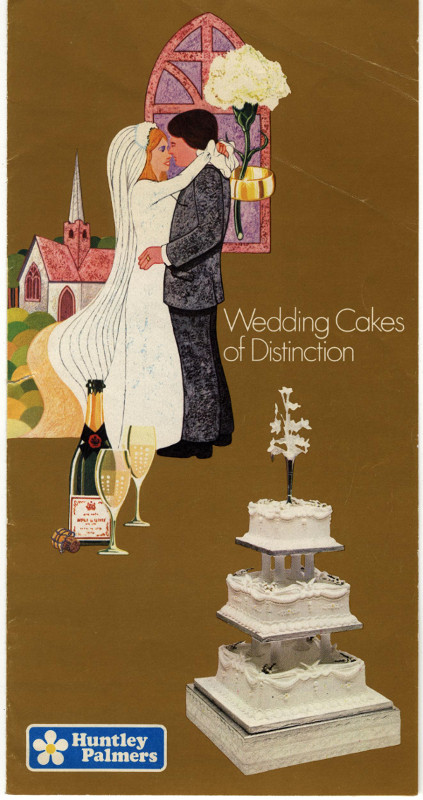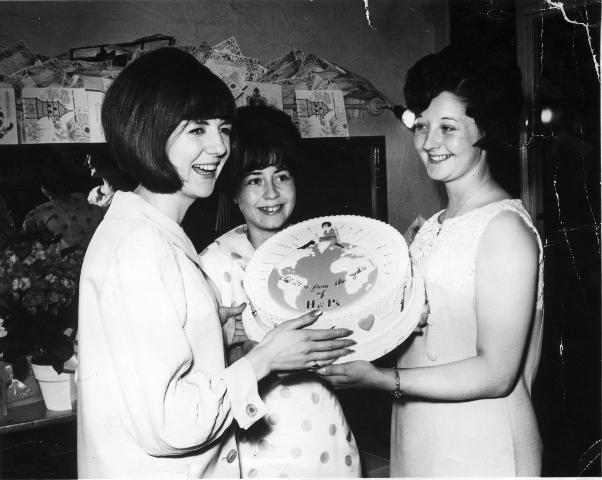Cake making for the first 100 or so years of the firm was a very subordinate activity. Thomas Huntley had made only three types of cake and the first surviving records from 1903-4 shows that cake output was only 3.5% of the total. Even when cake-making resumed after the First World War, sales were poor and the company's cakes were felt to be too dear and too dry.

Huntley & Palmers began making cakes in the 1830s. However their cakes never attained the same levels of fame as their biscuits. Initially all cakes were either made to order or produced in small batches according to demand. (REDMG : 1999.2.67)
The first successful cake
In July 1931 the firm introduced a slab cake aptly named the New Era and this led to a significant rise in cake output. The New Era cake was sold at 1 shilling a pound which, despite the high level of sales, did not contribute much to the profits of the firm. However, from 1936 onwards the cake factory was reorganised, and in the 1950s the first travelling oven for cakes was introduced.

Prior to the 1930s, cakes had been a very small part of Huntley & Palmers business. However the introduction of the New Era slab cake in 1931 saw cake output rise from an average of 167 tons per year to nearly 1,900 tons in 1939. (REDMG : 1997.82.99)
The impact of World War II
After the Second World War, a report for Huntley & Palmers recommended the increased production of slab and small cakes since the company's reputation for these products had greatly increased during the war. This was at the expense of confectionary of the swiss-roll type, where firms such as J. Lyons were already well established. Some cake vans were purchased as the railways had become unreliable and by 1951 the output of cakes reached 3,884 tons, more than double the 1939 level.
Wedding cakes
From the early days of cake making in the firm, Huntley & Palmers had sold wedding cakes baked to order. By the 1930s they produced elaborate catalogues with cakes designed in all colours and ranges. The company loaned electro-plated cake stands and knives for a small charge to customers that bought their wedding, birthday or christening cakes. In addition, every employee was baked a wedding cake on the occasion of their marriage.

1970s advert. The employees who iced the cakes were highly skilled craftspeople and many spent their whole working lives icing cakes at Huntley & Palmers. (REDMG : 1997.130.722)
Royal cakes
In July 1867 Huntley & Palmers became Purveyors to the Queen and in 1884 they were awarded the Royal Warrant by Queen Victoria. In 1947 the company made the future Queen Elizabeth II a royal wedding cake for her marriage to Prince Philip. The icing department worked continuously for three weeks on the cake which was originally designed to weigh 400lb!

The Royal Wedding cake for Princess Elizabeth. On the top tier were the crests from countries of the Commonwealth. The other tiers included images of the Royal Family, places with royal association and events from the couples' lives. (REDMG : 2002.72.14)
Cakes for pop stars
The Royal Wedding Cake was one of many made by Huntley & Palmers for Royalty in the twentieth century. However, queens and princes were not the only clients for which special cakes were made. On her 21st Birthday Cilla Black enjoyed a Huntley & Palmers birthday cake with a mini-Cilla made out of icing perched on top of the cake.

Cilla Black is presented with her birthday cake by two Huntley and Palmers employees in 1964: 16-year-old Mavis Morcroft and 21-year-old Pamela Yates, from the Huyton Factory in Liverpool. (REDMG : 1997.130.252)
Continue reading about Huntley & Palmers from the 1950s to the 1970s.





